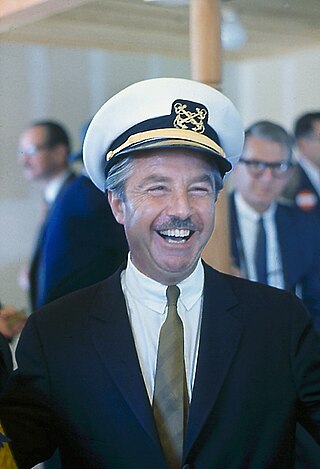Related Research Articles

Coca-Cola, or Coke, is a carbonated soft drink with a cola flavor manufactured by the Coca-Cola Company. In 2013, Coke products were sold in over 200 countries worldwide, with consumers drinking more than 1.8 billion company beverage servings each day. Coca-Cola ranked No. 94 in the 2024 Fortune 500 list of the largest United States corporations by total revenue. Based on Interbrand's "best global brand" study of 2023, Coca-Cola was the world's sixth most valuable brand.

Pepsi is a carbonated soft drink with a cola flavor, manufactured by PepsiCo. As of 2023, Pepsi is the second most valuable soft drink brand worldwide behind Coca-Cola; the two share a long-standing rivalry in what has been called the "cola wars".

A logo is a graphic mark, emblem, or symbol used to aid and promote public identification and recognition. It may be of an abstract or figurative design or to include the text of the name that it represents as in a wordmark.

Piccadilly Circus is a road junction and public space of London's West End in the City of Westminster. It was built in 1819 to connect Regent Street with Piccadilly. In this context, a circus, from the Latin word meaning "circle", is a round open space at a street junction.

The Designers Republic is a British graphic design studio based in Sheffield, England, founded in 1986 by Ian Anderson and Nick Phillips. They are best known for electronic music logos, album artwork, and anti-establishment aesthetics, embracing "brash consumerism and the uniform style of corporate brands". Work by tDR is held in the permanent collections of the Museum of Modern Art and the Victoria and Albert Museum.

Tab was a diet cola soft drink produced and distributed by The Coca-Cola Company, introduced in 1963 and discontinued in 2020. The company's first diet drink, Tab was popular among some people throughout the 1960s and 1970s as an alternative to Coca-Cola. Several variations were made, including a number of fruit-flavored, root beer, and ginger ale versions. Caffeine-free and clear variations were released in the late 1980s and early 1990s.

Coca-Cola Zero Sugar is a diet cola produced by the Coca-Cola Company.
The history of BBC television idents begins in the early 1950s when the BBC first displayed a logo between programmes to identify its service. As new technology has become available, these devices have evolved from simple still black and white images to the sophisticated full colour short films seen today. With the arrival of digital services in the United Kingdom, and with them many more new channels, branding is perceived by broadcasters to be much more important, meaning that idents need to stand out from the competition.

The BBC Two 1991–2001 idents were broadcast from 16 February 1991 until 19 November 2001, and again from 9 July 2014 until 26 September 2018, on BBC Two in the United Kingdom. The idents, which consisted of a sans-serif '2' in Gill Sans, accompanied by the colour viridian, were created by branding agency Lambie-Nairn, who also created the Channel 4 logo.

The "Virtual Globe" was the method of creating the BBC1 symbol that was used between 16 February 1991 and 4 October 1997.
Mother is an energy drink that originated in Australia and New Zealand by Coca-Cola. Introduced in late 2006 after Coca-Cola's failed attempt to purchase Red Bull, it competes with the two leading energy drinks on the market, V and Red Bull, in the $151 million industry.

Wolff Olins is a global brand consultancy agency that specializes in corporate identity. It was founded in 1965 in London, where its main office is still based, as well as having offices in New York City, San Francisco and Los Angeles. It employs some 150 designers, strategists, technologists, environment specialists and programme managers, and has been part of the Omnicom Group since 2001. Since the agency was founded, it has worked for several entities in various sectors including technology, culture, retail, sport, consumer goods, travel, energy and public utilities, media and non-profit.

Walter Joseph Landor was a brand designer and the founder of Landor & Fitch. He was an acclaimed designer and a pioneer of branding and consumer research techniques widely used to this day. Landor, the company he founded as Landor Associates in 1941, has offices around the world.
Hedkandi is an English record label, events and music brand owned by Ministry of Sound. Its back catalogue includes both artist albums and dance music compilations.
Superunion, known as Superunion Worldwide Limited legally, was a global brand and design consultancy, headquartered in London. It is a wholly-owned subsidiary of WPP. Superunion was formed after five agencies merged in January 2018, and employs 500 people across 16 offices.

Martin John Lambie-Nairn was an English designer. He was the founder of his branding agency Lambie-Nairn and was the creative director of branding agency ML-N. He is recognised for having redefined television brand identity design, being the first to embrace computer technologies to apply branding to screen-based media.
The logo of the BBC has been a brand identity for the corporation and its work since the 1950s in a variety of designs. Until the introduction of a logo in 1958, the corporation had relied on its coat of arms for official documentation and correspondence, although it rarely appeared onscreen. With the increased role of television for the BBC in the 1960s, particularly after the foundation of the ITV network, the corporation used its logo to increase viewer familiarity and to standardise its image and content. The logo has since been redesigned a number of times, most recently in 2021 with the BBC blocks, a logo designed to work across media. From 1958, there have been six different BBC logos. The first logo of the network was used from 1958 to 1963, the second from 1963 to 1971, the third from 1971 to 1992, the fourth from 1988 to 1997, the fifth from 1997 to 2021, while the sixth and current logo was adopted in October 2021.

The BBC TwoPersonality idents were a set of idents used on BBC Two from 19 November 2001 until 18 February 2007. The idents were produced by the Lambie-Nairn branding agency, who had created the previous look. The idents feature an ivory sans serif white '2' in a yellow environment and performing a variety of tasks, and a purple boxed BBC Two logo.
Sprite is a clear, lemon-lime flavored soft drink created by the Coca-Cola Company. Sprite comes in multiple flavors, including cranberry, cherry, grape, orange, tropical, ginger, and vanilla. Ice, peach, Berryclear remix, and newer versions of the drinks are artificially sweetened. Sprite was created to compete primarily against 7-Up.

Gerald Lawrence Barney is a British designer, best known for his 1965 British Rail Double Arrow, which is still in use in the UK.
References
- ↑ "Réseau de Anne Ma, Analyse des 231 relations - Zonebourse". www.zonebourse.com (in French). Retrieved 8 January 2024.
- ↑ "Jock Kinneir + Margaret Calvert / Designing Modern Britain - Design Museum : - Design/Designer Information". Design Museum. Retrieved 13 October 2009.
- ↑ by (28 November 2022). "London's Alleys: Sedley Place, W1". ianVisits. Retrieved 8 January 2024.
- ↑ Whitehead, Jennifer (1 October 2003). "Coca-Cola unveils intelligent billboard at Piccadilly Circus - advertising news - Campaign". Campaignlive.co.uk. Retrieved 13 October 2009.
- ↑ "Sedley Place livery for Cardhu | News". Design Week. 11 December 2003. Retrieved 13 October 2009.
- ↑ "Spirits News". The Drinks Report. Retrieved 13 October 2009.
- ↑ "Typographic Abbreviations Series #2: VAG « MyFonts Musings". Myfonts.wordpress.com. 17 November 2006. Retrieved 13 October 2009.
- ↑ "VAG Rounded". Typedia. Retrieved 13 October 2009.
- ↑ Stafford Cliff (2002). 50 Trade Secrets of Great Design Packaging. Rockport. p. 58. ISBN 978-1-56496-872-2.
- ↑ "Unreal Press: Hed Kandi To Stretch Its Legs After Rebrand". Unreal-uk.com. 31 August 2006. Retrieved 13 October 2009.
- ↑ "DueDil". app.duedil.com.
- ↑ "the johnson banks thought for the week". Johnsonbanks.co.uk. Retrieved 13 October 2009.
- ↑ "2006 AGM". ATypI. Retrieved 13 October 2009.
- ↑ "Lambie-Nairn". Lambie-Nairn. Retrieved 13 October 2009.
- ↑ Paul Mcpherson Design. "About". Paul McPherson Design. Retrieved 13 October 2009.